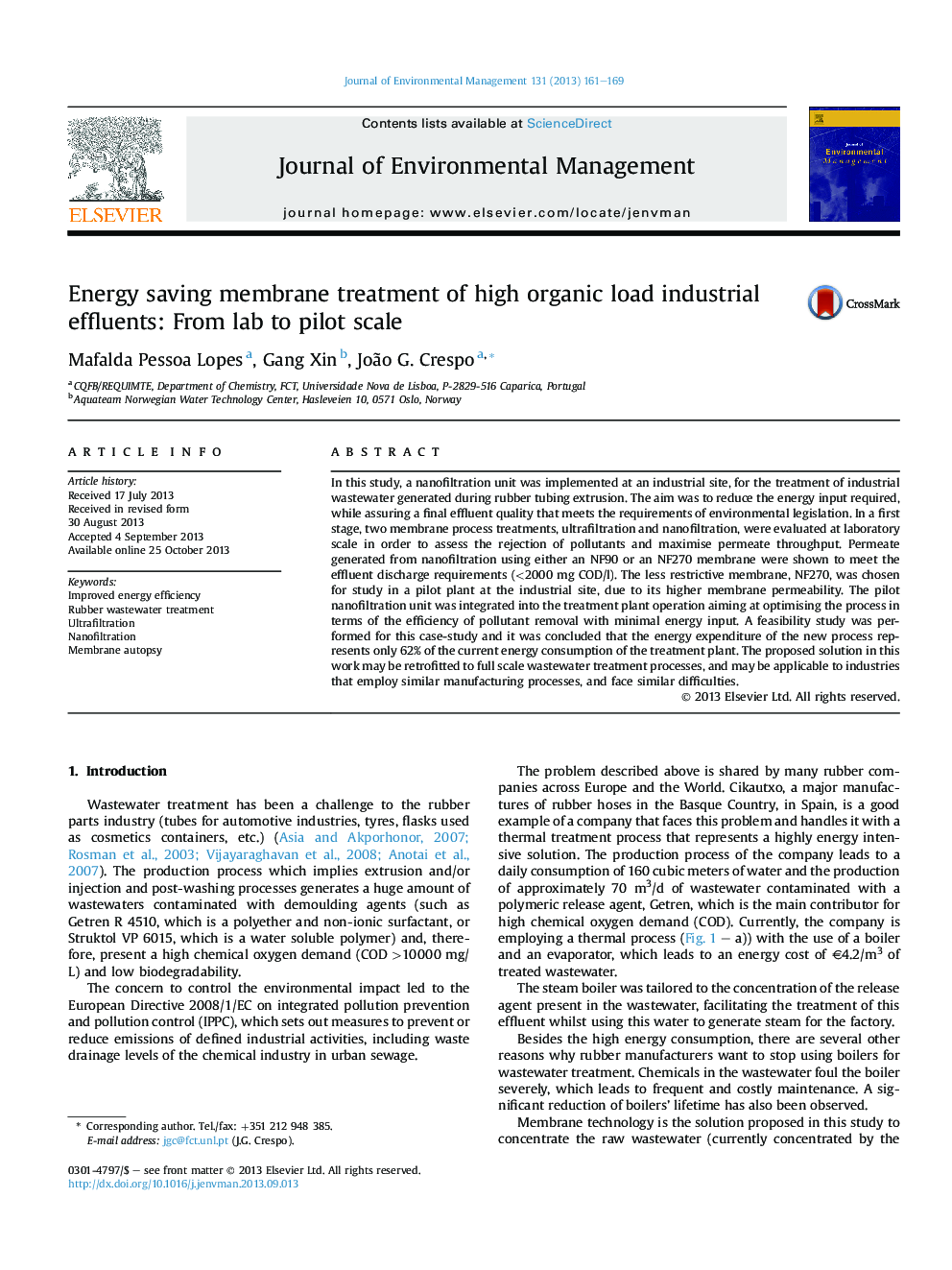| Article ID | Journal | Published Year | Pages | File Type |
|---|---|---|---|---|
| 1055945 | Journal of Environmental Management | 2013 | 9 Pages |
•Energy consumption in the proposed process is reduced by 38%.•An NF270 membrane assures the best compromise between flux and retention.•Permeate quality complies with the European legislation for water disposal.•The membrane cleaning protocol assures complete recovery of membrane permeability.•Organic compounds are main responsible for membrane fouling.
In this study, a nanofiltration unit was implemented at an industrial site, for the treatment of industrial wastewater generated during rubber tubing extrusion. The aim was to reduce the energy input required, while assuring a final effluent quality that meets the requirements of environmental legislation. In a first stage, two membrane process treatments, ultrafiltration and nanofiltration, were evaluated at laboratory scale in order to assess the rejection of pollutants and maximise permeate throughput. Permeate generated from nanofiltration using either an NF90 or an NF270 membrane were shown to meet the effluent discharge requirements (<2000 mg COD/l). The less restrictive membrane, NF270, was chosen for study in a pilot plant at the industrial site, due to its higher membrane permeability. The pilot nanofiltration unit was integrated into the treatment plant operation aiming at optimising the process in terms of the efficiency of pollutant removal with minimal energy input. A feasibility study was performed for this case-study and it was concluded that the energy expenditure of the new process represents only 62% of the current energy consumption of the treatment plant. The proposed solution in this work may be retrofitted to full scale wastewater treatment processes, and may be applicable to industries that employ similar manufacturing processes, and face similar difficulties.
Graphical abstractFigure optionsDownload full-size imageDownload as PowerPoint slide
